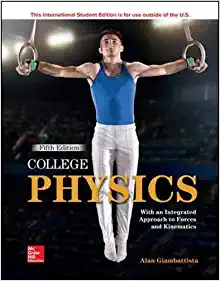Naturally occurring carbon consists of two different isotopes (excluding 14 C, which is present in only trace
Question:
Naturally occurring carbon consists of two different isotopes (excluding 14C, which is present in only trace amounts). The most abundant isotope is 12C. When carbon is placed in a mass spectrometer, 12C+ ions moved in a circle of radius 15.0 cm, whereas ions of the other isotope moved in a circle of radius 15.6 cm. What is the atomic mass of the rarer isotope?
In each of these problems, the ions entering the mass spectrometer have the same charges. Except in Problem 30, the ions enter the magnetic field with equal kinetic energies (not equal speeds). Use these atomic mass values: 12C, 12.00 u; 14C, 14.00 u; 16O, 15.99 u. The conversion between atomic mass units and kilograms is 1 u = 1.66 × 10−27 kg.
Step by Step Answer:

College Physics With An Integrated Approach To Forces And Kinematics
ISBN: 978-1260547719
5th Edition
Authors: Alan Giambattista





